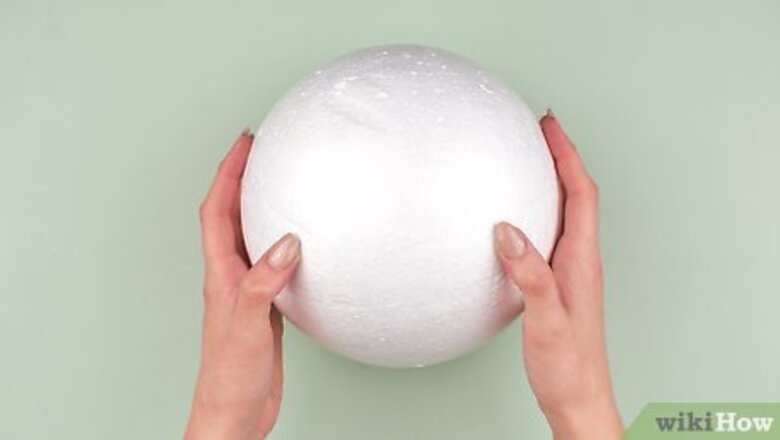
views
X
Research source
The crust is the thinnest outside layer of the Earth where the continents reside. The next layer is the mantle which is the largest layer and is divided into 2 parts. The core is also composed of 2 layers, the liquid outer core and the solid spherical inner core.[2]
X
Research source
There are many ways to make a model of the layers of the Earth, but the easiest and most common are to use sculpting clay/play dough for a 3D model or make a flat paper representation.
Making a Styrofoam Model
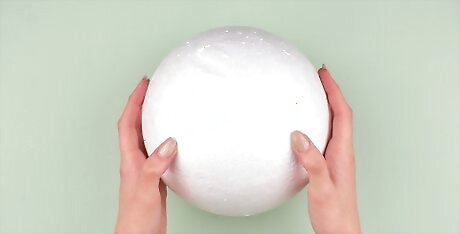
Gather the necessary materials. This model uses a foam sphere to represent the Earth with a quarter of it cut out so that you can see the inside layers of the “Earth”. Parental supervision/help is recommended when cutting a slice out of the ball. All of these supplies should be easily found around the house or purchased at a craft supply store.
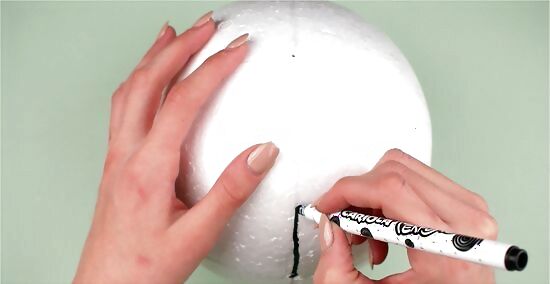
Draw a circle around the horizontal and vertical centers of the foam ball. You want to cut out approximately a quarter of the foam ball. To do this, you need to draw a circle around the horizontal and vertical halves of the ball. It doesn’t have to be exactly the center, but try to get close. Hold a ruler to the point that is about the center. Hold the pencil in place above the ruler. Have a friend rotate the ball horizontally while you hold the pencil and watch the line form around the center. When the ball is back to the starting point, rotate the ball vertically. When you’re finished, you should have two pencil lines that dive the ball into quarters.
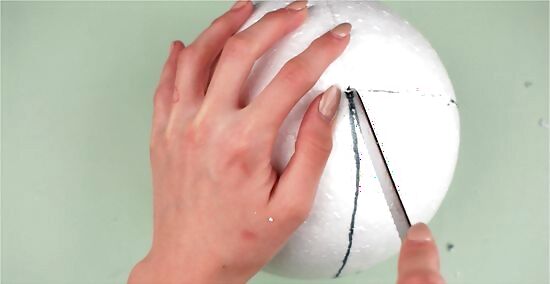
Cut a quarter out of the ball. With the 2 lines around the foam ball, it should be divided into quarters. You are going to cut one of those quarters out with the knife. Parental supervision is strongly recommended for this step. Position the foam ball so that one of the lines is facing straight up. Place the knife on the line and gently saw back and forth until you reach the center of the ball (the horizontal line). Reposition the ball so that the horizontal line is now facing up. Gently saw again until you reach the center of the ball. Wiggle the quarter until it comes free from the ball.
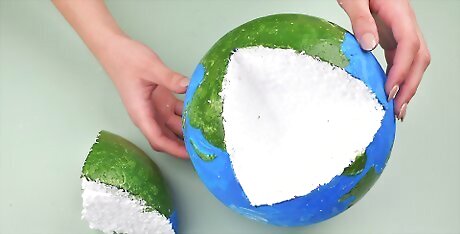
Paint the outside of the ball with the continents and ocean. You’ll want to start the model by painting the outside of it like the globe. Sketch the continents in pencil and then paint them green. Paint around the continents with blue to represent the ocean. You can throw away the quarter that was cut out of the ball. Let the globe dry before painting the inside.

Draw the layers of the Earth. With the pencil, sketch the layers inside the quarter that was cut out. The inner core is going to be a small circle in the very center of the ball. The outer core is next and should have a width about one-quarter of the inside. The next layers are the upper and lower mantle which will take almost all of the remaining space. The crust will be a very thin line painted just around the edges. Once each line has been sketched, color them in with the various paints. Use yellow for the inner core, orange for the outer core, 2 shades of red for the mantle (1 for the upper and 1 for the lower), and brown for the crust.

Label each layer with a toothpick. Make a small paper tag and wrap it around a toothpick. Tape it in place. Label each piece of paper with the corresponding layer. Stick the toothpick into the foam ball so that everything is properly labeled. Alternatively, you can write the labels directly on the ball. EXPERT TIP Jessie Antonellis-John Jessie Antonellis-John Math and Science Instructor Jessie Antonellis-John is a Math and Science Instructor who teaches at Southwestern Oregon Community College. With over 10 years of experience, she specializes in curriculum development. Jessie earned her PhD in Teaching & Teacher Education from the University of Arizona, her Master of Education from Western Governors University, and her BS in Astrophysics from Mount Holyoke College. She’s also co-authored several peer-reviewed journal articles in professional publications. Jessie Antonellis-John Jessie Antonellis-John Math and Science Instructor Demonstrate Earth's layers using chocolates with different textures. Making Earth layers with chocolate is fun and teaches about states of matter! Different chocolate textures represent the rocky mantle, liquid outer core, and solid inner core. Cutting it open shows the inside structure in a tasty way!
Making a Model with Dough

Gather the necessary materials. To make a three-dimensional model, you will need to purchase sculpting clay or make your own homemade play dough. Whichever version you choose, you will need 7 colors: 2 shades of yellow, and 1 shade each of orange, red, brown, green, and blue. Parental supervision is recommended if making the dough yourself.
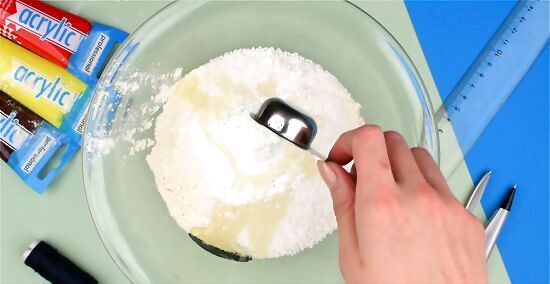
Make the homemade dough. If you have purchased sculpting clay or play dough then you can skip this step. Stir to combine all ingredients (flour, salt, cream of tartar, oil, and water) until there are no lumps. Add the mixture to the cook pot and heat on low, stirring constantly. As the dough heats it will thicken. Once the dough starts to pull away from the sides of the pot, remove it from the heat and let it cool to room temperature. When cool, knead the dough for 1-2 minutes. Parental supervision is recommended for this step. The coarse salt crystals will still be visible within the dough. This is normal.
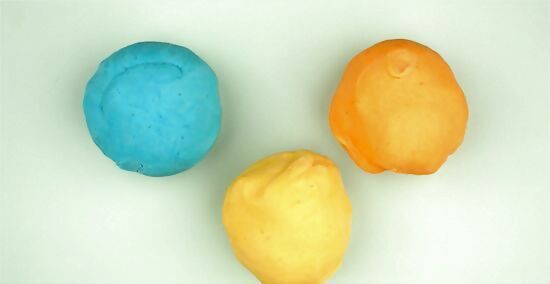
Separate the dough into 7 balls of varying sizes and dye them. Start by making 2 small balls about the size of a golf ball. Make 2 medium sized balls and then 3 larger balls. Add a few drops of food coloring to each ball according to the list below. Knead the dough until the color is fully incorporated. Two golf ball sizes: 1 green, 1 red. Medium sizes: 1 orange, 1 brown. Large sizes: 2 shades of yellow, 1 blue.
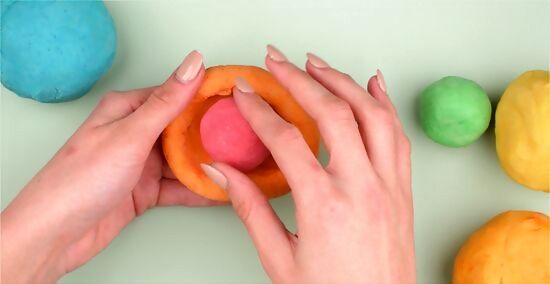
Wrap the orange dough around the red ball. You will build the layers of the Earth from the inside out. The red ball represents the inner core. The orange dough will be the outer core. Flatten the orange ball slightly so that you can wrap it fully around the red ball. You want the entire model to remain relatively spherical to resemble the shape of the Earth.
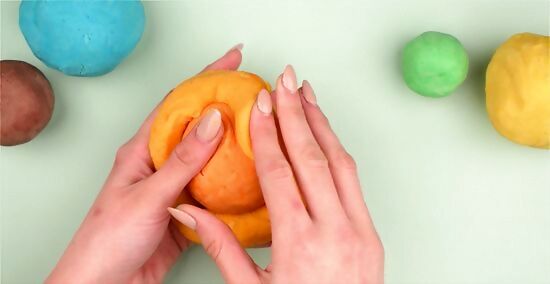
Wrap the yellow layers around the sphere. The next layer to add is the mantle which will be represented by 2 shades of yellow dough. The mantle is the largest layer of the Earth so you want to make sure that you have 2 thick layers of different shades of yellow around the dough ball you have made so far. Roll out the dough and then wrap it around the ball, joining all of the sides together into 1 layer. Repeat for the second layer of yellow.

Flatten and wrap the brown layer next. The brown dough will be used to represent the crust. This is by far the thinnest layer of the Earth. Roll out the brown dough until is quite thin and then wrap it around the dough ball as you did with the previous layers.
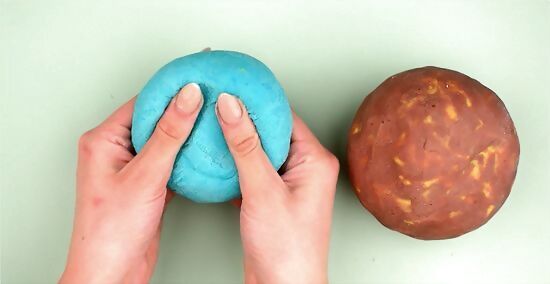
Wrap the Earth in the “ocean” and continents. Using the blue dough, wrap a thin layer around the globe. This will be the final layer added to the model. The ocean and continents are all technically part of the crust layer so they don’t count as their own individual layer. Finally, shape pieces of the green dough into approximations of the continents. Press them into the ocean approximately where they belong on the globe.
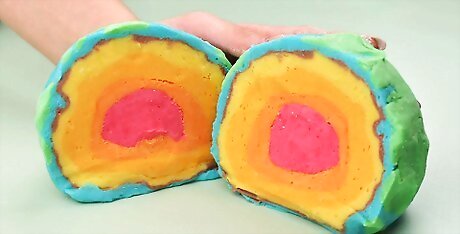
Slice the ball in half using the floss. Place the ball on a table and then position the floss along the centerline of the sphere. Imagine where the equator would be and place the floss there. Push the floss through the dough to cut the ball in half. The 2 halves should show you a clear cross-section of the layers of the Earth.
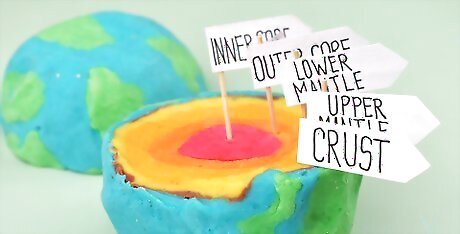
Label each layer. Make small labels for each layer by wrapping some paper around a toothpick. Tape the paper in place. Make 5 labels: Crust, Upper Mantle, Lower Mantle Outer Core, and Inner Core. Stick the toothpicks into the corresponding layer. Because you have 2 halves of the Earth, you can use 1 half with the layers labeled and exposed and present the other half with the ocean and continents face up, as a “view from the top”.
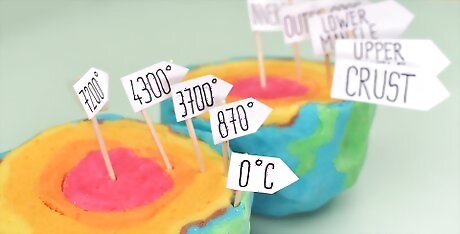
Include interesting facts about each layer. Look up facts about the composition and thickness of each layer. Include information about the density and temperatures present. Write up a small report or infographic to include with your 3D model to explain the different layers of the Earth. The crust is interesting because there are two types of crust: oceanic and continental. This is easily seen by looking at the model and seeing that the crust contains both the oceans and the continents. The mantle takes up about 84% of the Earth’s volume. The mantle is mostly solid, but acts like a viscous fluid. Movement within the mantle is responsible for the motion of tectonic plates. The outer core is liquid and is estimated to be 80% iron. It spins faster than the rotation of the planet and is thought to contribute to the magnetic field of the Earth. The inner core is also composed mostly of iron and nickel with potential heavier elements such as gold, platinum, and silver present. Because of the massively high pressure the inner core experiences, it is solid.
Using a Paper Model
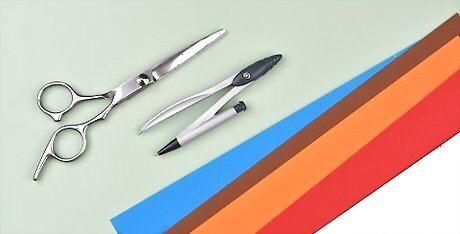
Gather the necessary materials. Making a paper model is similar to making the clay model, except your layers will be made using different sized circles of construction paper. The finished size of your paper model depends on how large you want to make it. Using a compass to draw the circles is an easy way to make perfect circles and easily vary the sizes. If you don’t have a compass, you can find 5 circular shapes to use as stencils for each layer of the Earth. Use textured paper to make your model stand out.
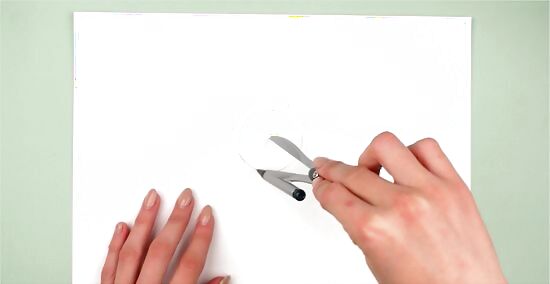
Draw 5 circles for each layer. Draw 5 circles of varying sizes on the different colored construction paper. Make the inner core white, the outer core blue, the upper mantle orange, the lower mantle red, and the crust brown. Use the compass or your circular stencils to make shapes according to the following dimensions: Inner core: diameter of 2 inches Outer core: diameter of 4 inches Lower mantle: diameter of 7 inches Upper mantle: diameter of 8 inches Crust: diameter of 8.5 inches These dimensions are just suggestions, you can make the circles any size you would like as long as you make the mantle the largest layer and the crust the thinnest layer.
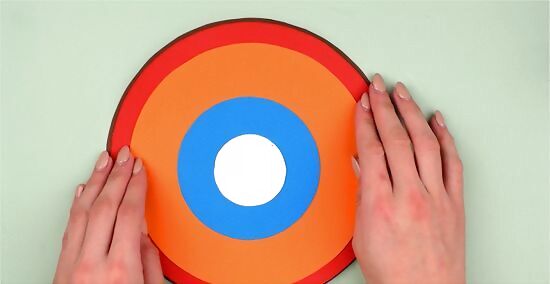
Cut out each layer and stack them. Once you have drawn the circles, take a pair of scissors and carefully cut each circle out. Try to cut as close to the drawn line as possible to make sure each layer is circular. Stack the layers from smallest to largest so you can clearly see the various layers on top of each other. Place the brown crust down first, then place the red mantle on top, the orange mantle next, then the blue outer core, followed by the white inner core. Use the glue stick to glue each layer down.

Label all of the layers. Glue the 5-layer Earth model to a larger poster board. Make 5 labels and glue them down next to the appropriate layer: Crust, Upper Mantle, Lower Mantle, Outer Core, Inner Core. Include interesting facts about each layer. Add information about the composition of the layer, the average temperatures, and any special features that each layer has. Try to relate your interesting facts to discussions that you may have had during class.










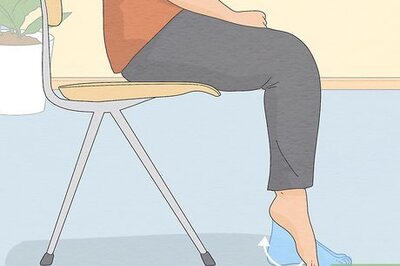







Comments
0 comment